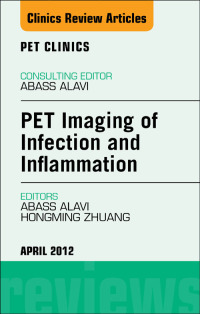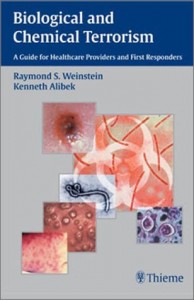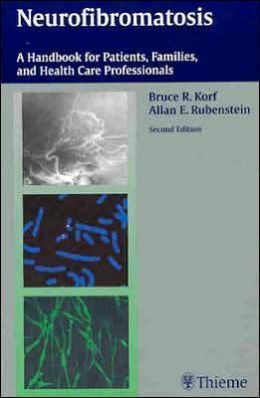-76%
The Multifaceted Applications of PET/CT in Infection and Inflammation Management
Positron emission tomography/computed tomography (PET/CT) has emerged as a transformative imaging modality, revolutionizing the management of a wide spectrum of infectious and inflammatory conditions. Its unique ability to visualize metabolic activity and detect disease processes provides invaluable insights for clinicians.
Arthroplasty-Associated Infection: A Path to Optimized Care
PET/CT has proven to be a highly effective tool for the diagnosis and management of arthroplasty-associated infections. By utilizing the glucose analog fluorodeoxyglucose (FDG) as a tracer, PET/CT can detect metabolic abnormalities in infected joints, aiding in the differentiation from aseptic conditions. This information empowers physicians to make informed decisions regarding appropriate treatments, such as antibiotic therapy or surgical intervention, optimizing patient outcomes.
Inflammatory Bowel Disease: Illuminating the Extent and Activity
In the realm of inflammatory bowel disease (IBD), PET/CT provides a comprehensive assessment of the disease’s extent and activity. By visualizing FDG uptake in the gastrointestinal tract, PET/CT can pinpoint areas of inflammation and disease severity. This detailed information allows clinicians to tailor treatment strategies, monitor disease progression, and assess therapeutic responses with precision.
Diabetic Foot: Navigating the Complexities
PET/CT also plays a pivotal role in the evaluation of diabetic foot infections. The intricate vascular anatomy and the presence of multiple comorbidities in diabetic patients make it challenging to diagnose and manage these infections effectively. PET/CT offers a comprehensive approach, detecting metabolic abnormalities associated with infection, osteomyelitis, and soft tissue involvement. This enhanced diagnostic accuracy optimizes treatment decisions, preventing limb amputation and improving patient morbidity.
Non-Malignant Therapeutic Efficacy Monitoring: A Window into Treatment Progress
Beyond its role in infection detection, PET/CT has also demonstrated utility in monitoring therapeutic effects in patients without malignancy. By tracking FDG avidity changes in response to treatment, PET/CT can provide an objective measure of treatment efficacy. This information guides clinicians in adjusting treatment plans and ensuring optimal outcomes for patients with non-malignant conditions.
Sarcoidosis and IgG4 Disease: Unveiling the Hidden
In the realm of systemic diseases, PET/CT has proven invaluable for detecting and characterizing sarcoidosis and IgG4 disease. Both conditions can manifest in various organs and tissues, making diagnosis challenging. PET/CT, with its whole-body imaging capability, can detect metabolically active lesions, facilitating accurate diagnosis and appropriate management.
Fever of Unknown Origin: Unraveling the Enigma
PET/CT has also become an essential tool in investigating fever of unknown origin (FUO). By systematically searching the entire body for metabolic abnormalities, PET/CT can pinpoint the source of infection or inflammation, even in cases where conventional diagnostic methods have failed. This diagnostic clarity enables physicians to initiate targeted treatments, resolving patients’ debilitating symptoms.
Atherosclerosis and Vasculitis: Mapping the Landscape of Inflammation
The role of PET/CT extends to the evaluation of atherosclerosis and vasculitis. By utilizing FDG or other radiotracers, PET/CT can visualize inflammatory lesions and quantify their metabolic activity. This information assists clinicians in identifying high-risk lesions, stratifying patients for appropriate therapies, and monitoring the efficacy of interventions.
Severe Infections in Malignancies: Guiding Optimal Management
In patients with malignancies, PET/CT has emerged as a valuable tool for managing severe infections. By differentiating infection from tumor relapse or treatment-related side effects, PET/CT enables clinicians to optimize antibiotic therapy and prevent unnecessary interventions. This targeted approach reduces patient morbidity and mortality, improving overall survival outcomes.
Osteomyelitis: A Clearer Path to Diagnosis
PET/CT has revolutionized the diagnosis of osteomyelitis, an infection of the bone. By combining anatomical and metabolic information, PET/CT can accurately identify and localize the site of infection, even in complex cases. This precise diagnosis facilitates prompt initiation of appropriate antimicrobial therapy, preserving bone integrity and preventing complications.
maybe you like these too:
- Modern Imaging Evaluation of the Brain, Body and Spine, An Issue of Magnetic Resonance Imaging Clinics (The Clinics: Radiology) (Original PDF from Publisher)
- Infectious Disease Challenges in Solid Organ Transplant Recipients, an Issue of Infectious Disease Clinics, 1e (The Clinics: Internal Medicine)
- ASNC 2021 Nuclear Cardiology Board Prep Exam Course (Videos)
- UCSF Radiology Review – Comprehensive Imaging 2021 (Videos)










Reviews
Clear filtersThere are no reviews yet.